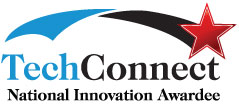TECHNOLOGY SUMMARY
A modular system capable of waste conversion and hydrogen production has been developed to reduce cost and increase sustainability. For microbial electrolysis cell technology to be commercial, a current density and hydrogen productivity of >20 A/m2 and >15 L-hydrogen/L-reactor/day, respectively are needed. The main technical risks and challenges to reach high productivity at large-scale are: (1) Achieving and maintaining high conversion of waste, (2) Charge transfer, (3) Reactor material costs. We have achieved promising results in the first two areas, developing a robust electro-active microbial community capable of efficiently directing a wide range of compounds present in waste into electrons. Additionally, we have optimized operating conditions and improved reactor design to develop a bioelectrochemical cell capable of reaching the target current densities and hydrogen production. Integration of these advances in preliminary testing with food waste has shown a current density even higher than the targets mentioned above, indicating potential for success in application development.
AREA/MATURITY/AWARDS
Primary Application Area: Energy, Efficiency, Environmental
Technology Development Status: Prototype
Technology Readiness Level: TRL 4
Vetted Programs/Awards: Invited to NREL Innovation Showcase, Partnership with a French company for presentation at CES Expo in Las Vegas in 2019
SHOWCASE SUMMARY
Organization Type: Early-stage Startup (Seed)

Showcase Booth #: 25M
Website: https://www.electroactive.tech
GOVT/EXTERNAL FUNDING SOURCES
External Funding to Date: SBIR applications under review